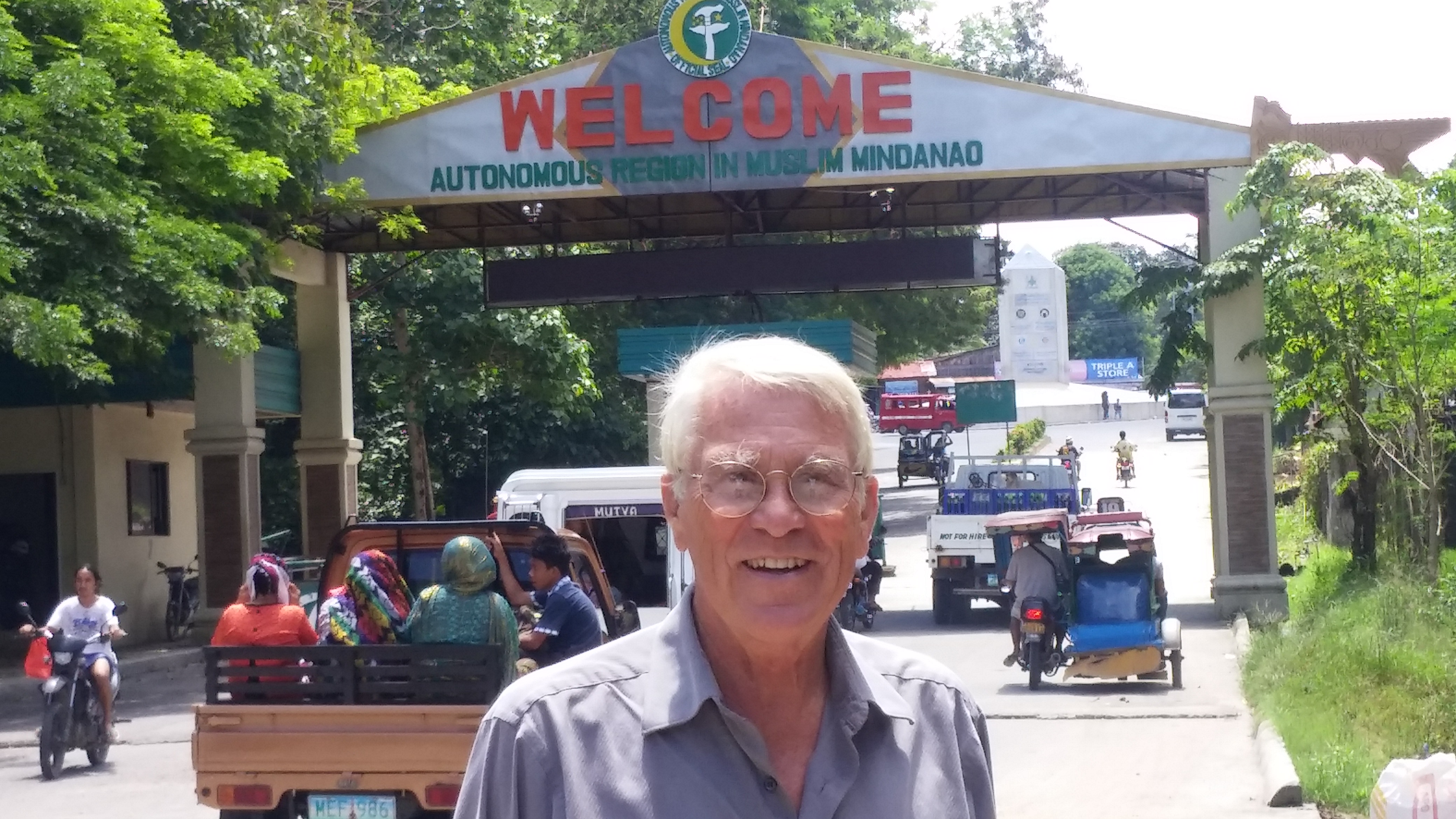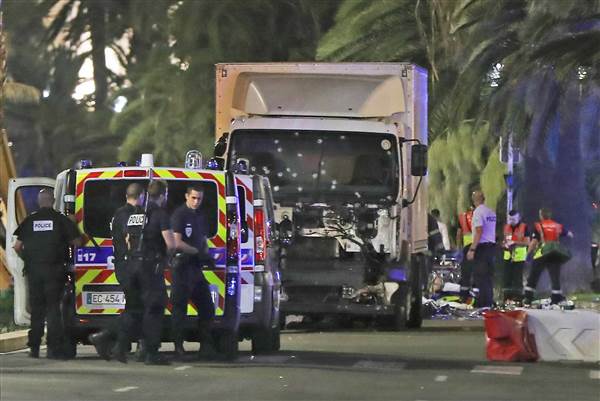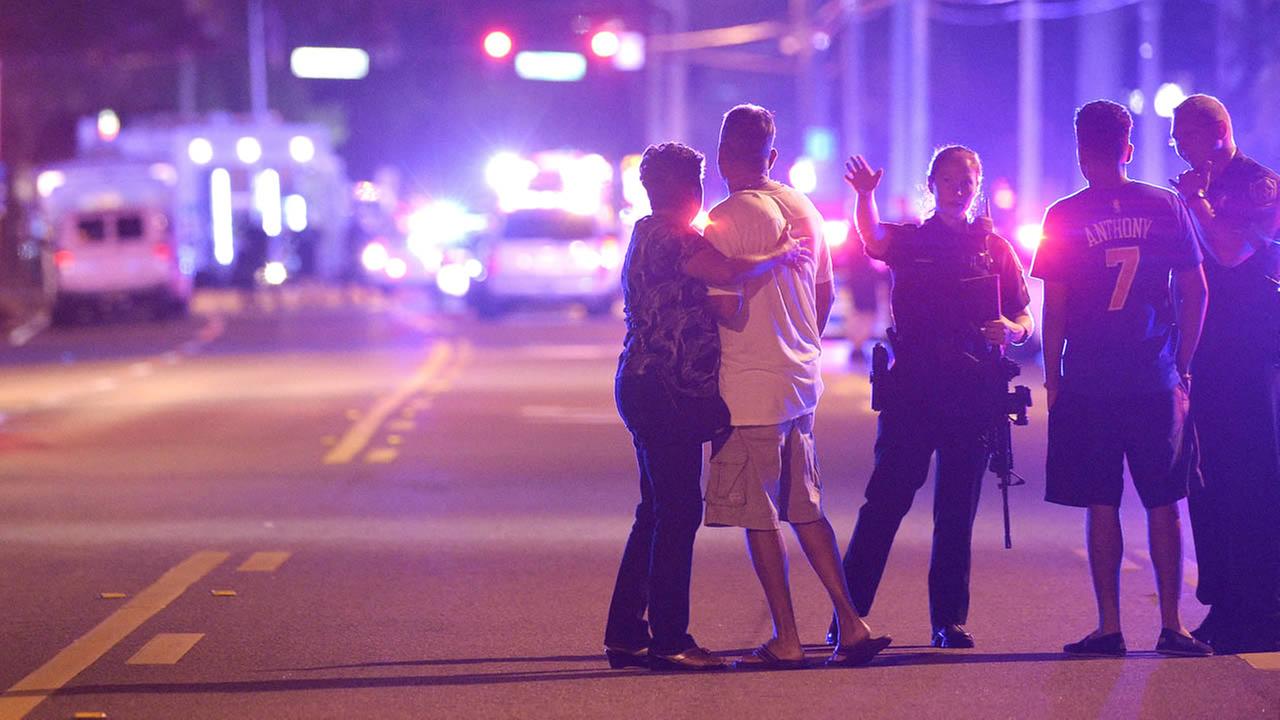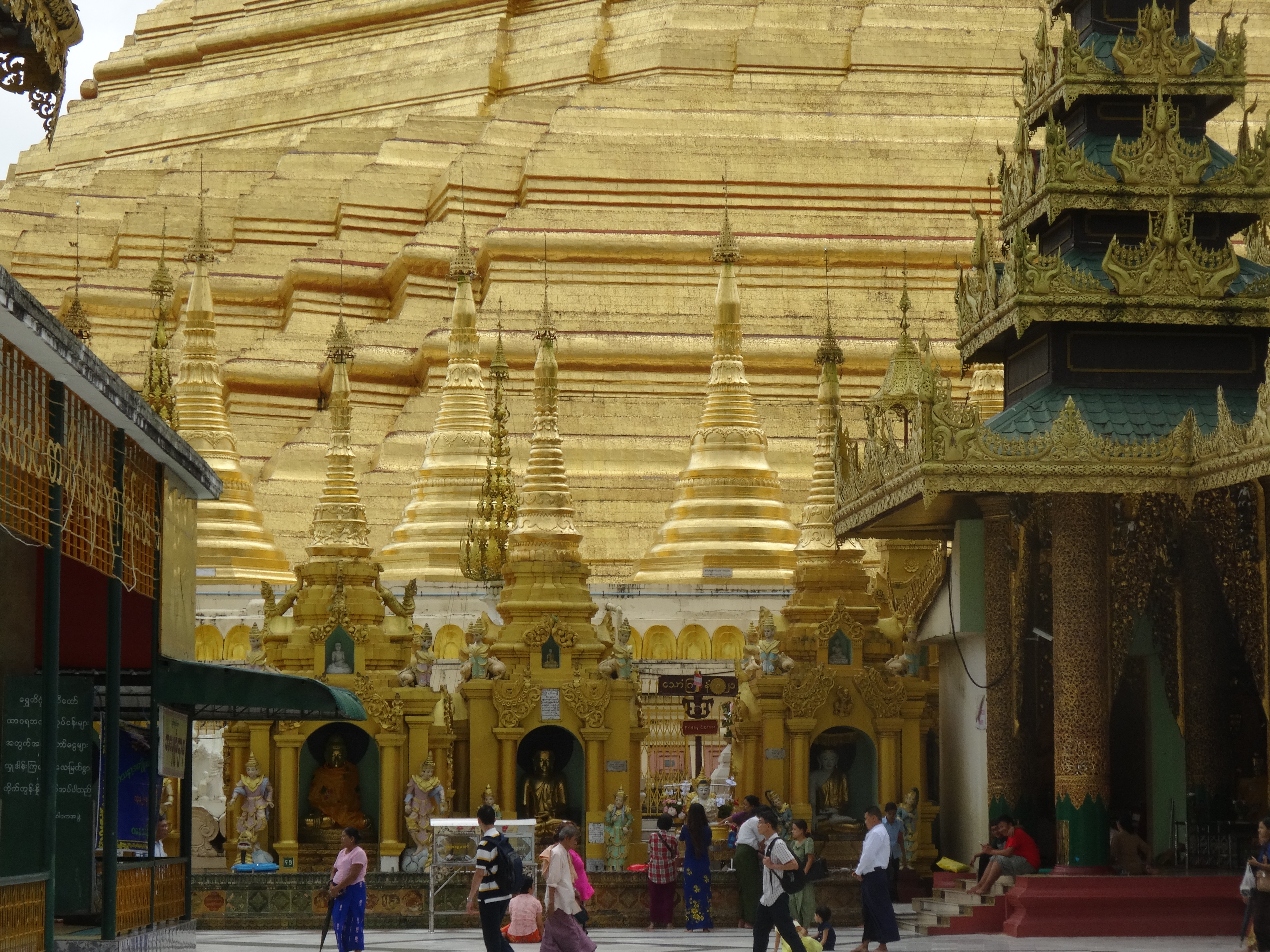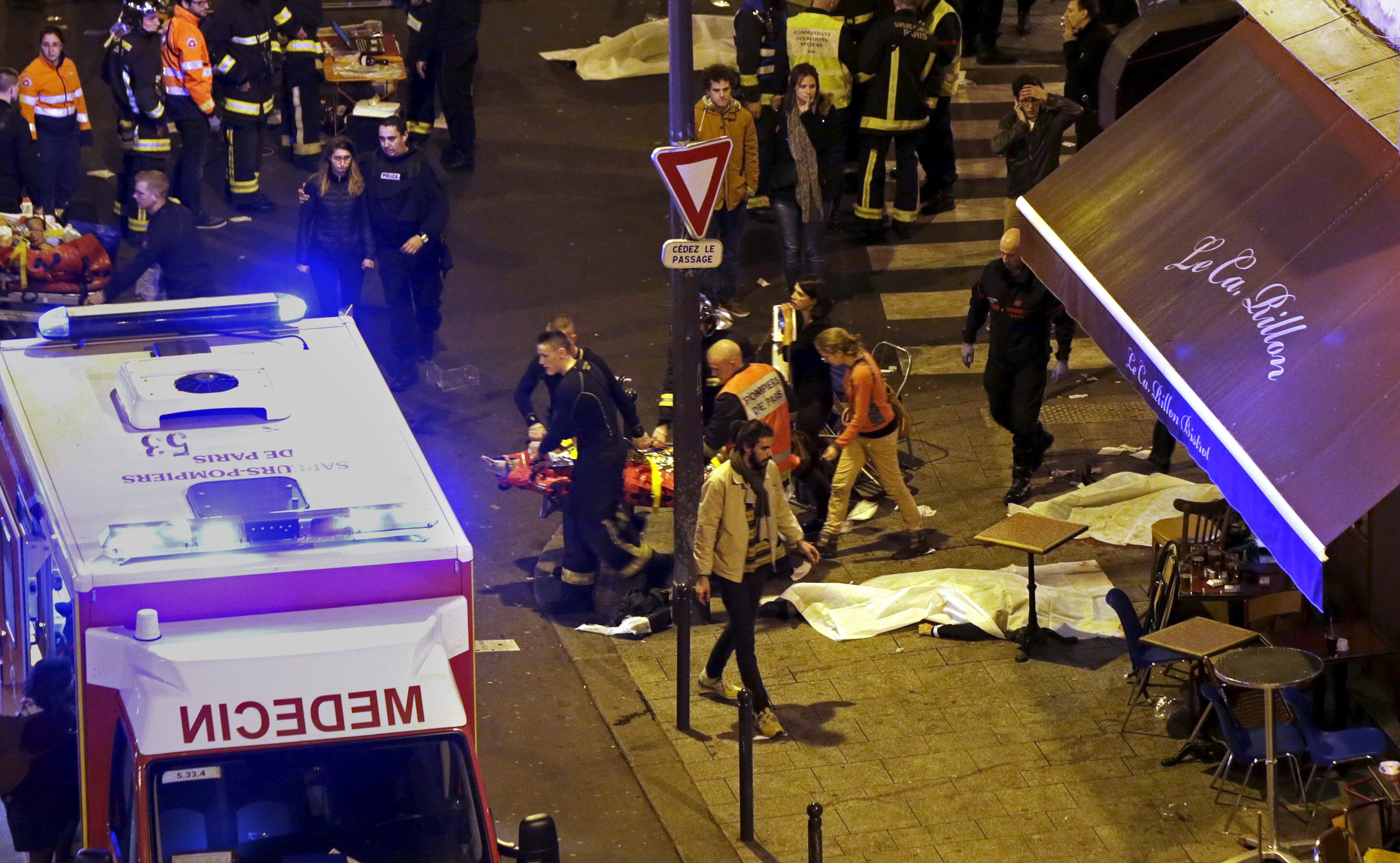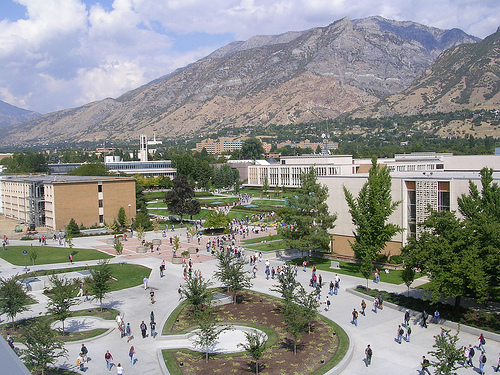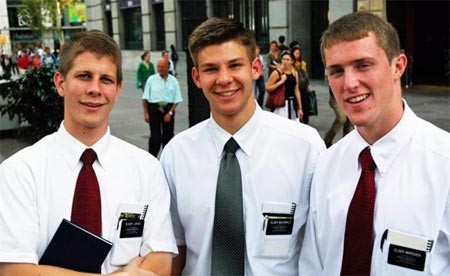“Abu Sayyaf has nothing to do with Islam or the Moro movement,” one of the leaders of the Moro Islamic Liberation Front told me when I recently talked with him in the southern Philippine island of Mindanao. Just because Abu Sayyaf claimed to be Muslim, had affiliated itself with the movement known as the Islamic State of Iraq and Syria, and had adopted its distinctive black flag, he said, that did not mean that it was anything other than a gang of thieves.
This was interesting, since the Abu Sayyaf connection to ISIS has often been given as an example of the worldwide reach of the movement, extending even to the Philippines. It is often regarded as the extreme face of Muslim separatism there, centered in the island of Mindanao and the Sulu archipelago. Or at least that is the general perception of it outside the region. In Mindanao, the Abu Sayyaf cadres are regarded as thugs.
On September 21, 2015, a motorboat with a dozen or so armed Abu Sayyaf militants arrived at night at the upscale Holiday Ocean View resort on the tiny island of Samal off of the southern shore of Mindanao. Like other resorts on Samal, it caters to Europeans and North Americans seeking a sun-soaked vacation of tropical forests and golden beaches, and were unprepared for a militant attack. Apparently at random the Abu Sayyaf kidnappers nabbed the first foreigners they encountered: two middle-aged Canadian men and a Norwegian man, along with the Filipina girlfriend of one of the Canadians. They were then taken back to the boat and whisked off to the group’s headquarters near the town of Jolo in the Sulu archipelago, where monetary demands were made for the release of the hostages. In May, 2016, when there was no positive response, one of the Canadians was beheaded and his head left in a bag on the main street of Jolo. In June 2016 the other Canadian was beheaded, and the Filipina girlfriend was released. The Norwegian remained captive until September 2016, when he was released after a ransom was paid.
When I went to Mindanao two months after the second beheading, therefore, it was with a certain degree of trepidation. I flew from Manila to Cotabato City in central Mindanao, not far from where the Samal island kidnappings had taken place. Despite the recent attacks the region seemed calm, rural and sleepy, with pockmarked roads winding through lush tropical forests. Needless to say, however, there were no other foreigners on my flight, nor did I see any during my stay.
Though I saw no reason to be threatened, I felt secure in the hospitality provided by the local educational institution, Notre Dame University, run by a Roman Catholic monastic order, the Missionary Oblates of Mary Immaculate (OMI). The president of the University, Fr Charlie Inzon, OMI, was my gracious host and provided a room for me in the priests’ house on campus. His administrative assistant helped make arrangements to talk with people involved with the Moro movement, Muslim leaders as well as government officials.
What I discovered was that the movement was much more complicated than Abu Sayyaf, and that it has been around for quite a while. Although most of the Philippines is Christian, Mindanao and the Sulu archipelago of islands stretching towards Indonesia and Malaysia has been Muslim for centuries. There were Muslim Sultanates on Mindanao prior to the Spanish conquest of the Philippines in the sixteenth century, and it was the Spanish who called the Muslims “Moros,” thinking they were much like the Moors of Spain.
So the Moros have always thought of themselves as different from the rest of the Philippines. The United States colonized the Philippines after the Spanish-American War in 1898, and after it granted the Philippines independence in 1946 the movement for an autonomous Muslim region in Mindanao picked up steam. For some decades, however, their protests were violent. After decades of armed encounters between armed militia associated with the Moro movement and the armed forces and armed police of the Philippine government, negotiations in recent years have led to a peace process with a good chance that the major issues in the conflict will be resolved.
This does not mean that all elements within the Moro movement are happy about the negotiations with the Philippine government, however. Nor are they all willing to put down their arms. The Abu Sayyaf is one of these die-hard militant movements, which began as a faction of the Moro National Liberation Front (MNLF) and has degenerated into a brigand gang with no purpose other than to gain money extracted through extortion in taking hostages. Estimates of their profits in recent years have ranged from twenty to thirty million dollars. The Canadian government refused to provide the twenty-eight million dollars initially demanded for each of the Samal island hostages, or the amount to which it was later lowered, eight million dollars. After Abu Sayyaf responded by killing them, it is not clear what amount the Norwegian government was willing to offer for the release of the remaining Norwegian hostage.
Abu Sayyaf started as more than a kidnapping band, however. It was founded in 1991 by Abdurajik Abubakar Janjalani, who had studied Islamic theology and was determined to give a more religious character to the movement than the secular MNLF had provided. Janjalani went to Afghanistan in the 1980s to join the Mujahadeen, and he was said to have received an infusion of cash and a mandate from Osama bin Laden to organize a more militant al Qaeda- style movement in the Philippines. The name, Abu Sayyaf, reflects this militant posture, since it means “father of the swordsman.”
After Janjalani’s death in 1998, one of his successors, Isnilon Totoni Hapilon, swore an oath of loyalty in 2014 to Abu Bakr al-Baghdadi, the so-called Caliph of the Islamic State. Hapilon regarded ISIS as giving a religious credibility to the movement’s violence, including beheadings, and, like ISIS, taking captive women into sex slavery as temporary “wives.” Today there are only a few hundred militants remaining in the movement, though villages near the areas where they are encamped are said to be paid for their silent support with the profits that the group has accrued through hostage-taking and extortion.
Abu Sayyaf was not the only movement to split off from the MNLF and to seek a religious justification for the cause. Earlier, in the 1970s, a much larger and more influential faction of the MNLF created the Moro Islamic Liberation Front, which is known by its initials, MILF.
When I was in Mindanao, I sought out leaders of the Moro movement, and one of the most articulate leaders I encountered was a young lawyer, Naguib Sinarimbo, who was a strategist and negotiator for the MILF. When I met with him in the offices of the UN Development Program, where he worked as an advisor on the Moro peace process, Sinarimbo was wearing dark-rimmed glasses and a V-neck sweater, and spoke articulately about the history and goals of the movement. Rather than looking like a Muslim militant—whatever that might be—he looked like the young lawyer and bureaucrat that he in fact was. He told me stories about how in his previous work with the government when he went on work-related trips to Manila he became annoyed when co-workers in the government did not realize that he was Muslim, and he would listen as they denigrated the Moros and their political goals. That made him determined to leave government service and join the movement.
The specific movement that he joined was the Moro Islamic Liberation Front. I asked him why he did not join the MNLF instead, and he explained that it was partly a matter of ethnicity and location, and partly a matter of ideology. The MNLF was based in the Sulu archipelago which tends to speak a Visayan language; the MILF was based in West-Central Mindanao where people in the Cotabato City vicinity spoke Maguindanao. For Naguib Sinarimbo, the MILF was the dominant movement in his region.
But there were also religious reasons that made it appealing, and nationalist ones. Sinarimbo thought that the MILF took a stronger stand for Moro rights and did not as easily capitulate to the government’s demands. It was able to do this, in part, because of its insistence that Muslim identity and culture were at the core of the Moro demands, and in part because the movement had stronger leadership, Sinarimbo felt, than did the MNLF.
The MNLF, which had been founded in 1969 by a professor from the University of the Philippines, entered into peace negotiations with the Philippine government. These resulted in the Tripoli Agreement of 1976, brokered by Libya’s Muammar Qaddafi, which eventually led to the creation in 1989 of an Autonomous Region in Muslim Mindanao (ARMM). Though it sounded like an effective resolution to the conflict, ARMM was in fact a fairly ineffective administrative demarcation without much power, and with very little economic impact.
The Moro Islamic Liberation Front, which is known by its initials, MILF, was a reaction to the 1976 Tripoli Agreement, and was founded the year afterwards by Hashim Salamat, a religious teacher who had studied at the premier Muslim educational institution in Cairo, Al Azhar University, where he was influenced by Egypt’s Muslim Brotherhood. Salamat believed that Muslim principles, including a ban on alcohol and tobacco, should be requisite for an autonomous Muslim state. He and the MILF movement rejected the Autonomous Region in Muslim Mindanao that was negotiated between the MNLF and Philippine officials and for a time proclaimed a jihad against the government. The movement collaborated on several military campaigns against the government with Abu Sayyaf during the earlier, more idealistic stages of the movement, before it turned to kidnappings and pledged its support to ISIS.
In recent years the MILF has become more conciliatory even as Abu Sayyaf has become more violent. The MILF has entered into its own negotiations with the Philippine government for a comprehensive peace settlement that would create Bangsamoro—a Moro State—in the Mindanao region to replace ARMM. One of the significant features of the negotiated deal is an elaborate sharing of government funds raised from taxes and sales of natural resources. In 2014, the Bangsamoro agreement was signed, with high hopes that the new entity would bring the region the identity and tranquility for which the movement had sought over many years.
There was a hitch, however. Before being implemented, the Philippines Congress had to pass a law enacting the provisions of the agreement. Before the bill was slated to be approved, an armed encounter between the Philippines National Police and militia units related to the MILF at the village of Mamasapano in Mindanao resulted in over sixty deaths. Investigations after the incident blamed poor communications between the police and officials in the MILF for the confusion that led to the clash, but the public blamed the Moros. The time was not ripe for Congressional approval and 2015 ended without a vote on the issue.
In 2016, the Philippines elected a new President, Rodrigo Duterte, a colorful politician from the Mindanao city of Davao. When I was in Manila, I talked with staff members of the Presidential advisory office that monitors the peace process, and they were optimistic. One of the directors, Pamela Padila, told me that Duterte had pledged to bring the Bangsamoro implementation bill up for a vote, though not until some revisions were made. She suggested that maybe next year the agreement would finally be implemented, and she showed me a chart indicating June, 2017, as the date for formal approval. Other political observers were more skeptical. For the MILF cadres, even a year meant more waiting and frustration.
“I give the government two years at most,” Naguib Sinarimbo told me. He explained that the young members of the movement were impatient and wary of the compromises that the movement had to make already. If the agreement were to be watered down further, or delayed for an indefinite period of time, their restlessness might lead to renewed militant action. Moreover, the credibility of the MILF leadership would be undermined and negotiations with the government would be mistrusted. The situation would be fertile for violence.
One of the persons most concerned about the renewal of military confrontation from elements of the MILF was one of its area commanders, Butch Malang, with whom I spoke in Cotabato City, Mindanao. Though he had led his Moro fighters on a number of campaigns against the government in the past, Malang had now renounced violence in favor of the 2014 peace agreement, and was serving as Vice Chair of the MILF panel on the Coordinating Committee for the Cessation of Hostilities, a joint government-Moro movement organization that was charged with overseeing the demilitarization of the Moro militias and coordinating between the police and the movement to keep incidents such as the bloody encounter last year at Mamasapano from occurring.
Butch Malang knew his fighters, and he knew that the younger ones especially were easily lured into more violent organizations than MILF if they were frustrated. One such group, a faction that had split off from MILF, was organized as the Bangsamoro Islamic Freedom Fighters (BIFF). They had already been involved, along with MILF militia, in the Mamasapano incident, and were ready to mobilize and attract new recruits as soon as the peace agreement seemed to be faltering.
This assessment was supported by Major Carlos Sol, a former Philippines army official who was appointed director of the Coordinating Committee for the Cessation of Hostilities. Major Sol was raised in central Mindanao and though he was Christian he knew the players in the Muslim movements well. When I talked with him about the situation in his map-lined office in Cotabato City, Major Sol explained some of the internal politics within the movements. He also told me that there were three other small groups of Moro fighters beside Abu Sayyaf that had pledged their support to ISIS. One, created by the nephew of the founder of BIFF, called itself ISIS of Mindanao.
All of these allegedly ISIS-related groups, including Abu Sayyaf, were examples of what I have called ISIS-branding: they had no real connection to the ISIS movement but had adopted its name—its brand—to give them international militant credibility. Nonetheless, the movements in their own locales are just as lethal as ISIS is in Syria and Iraq. Any of these movements in Mindanao could quickly erupt in violence if they sensed that the mood of frustration in the Muslim regions would support them.
In the meantime, leaders like Naguib Sinaringo were planning to create a political party. They were getting ready for the next stage of the movement, the implementation of Bangsamoro as a political entity. This means that leaders and fighters in the movement that have lead an armed struggle over many years will have to adjust to peace. They will have to treat the government like an ally rather than a foe, and learn the art of compromise and negotiation that all politicians have to adopt.
This also means that the militants will have to abandon the vision of a cosmic war between good and evil that had animated much of their struggle, and made mortal enemies out of those with whom they differed, including the government and other branches of the movement. Butch Malang admitted that might be difficult.
“Some of our fighters know only how to fight,” he said, somewhat sadly. In his case, however, the old commander himself had willingly taken on a new role of facilitator in the cessation of hostilities. So new circumstances—the hope of a settlement—can make old fighters look differently at a struggle, and even imagine the possibilities of reconciliation and peace.
Religion has been playing a role in the transition from conflict to peace, and it is a good role rather than a destructive one. Since the MILF has influence over all of the mosques in the area, Sinaringo told me, they have given the imams in each of the mosques instructions on what to include in the sermons about the peace process. The imams have encouraged the faithful in the area to embrace the plan and not militantly reject it the way that the BIFF and Abu Sayyaf have urged them to do.
Back at the campus of Notre Dame University, I found that President Charlie Inzon and his faculty members had found other ways to use religion in the healing process. He has set up a peace research center in the University, and has helped to create an interfaith council in the community. He has also used the curriculum itself as a means of reconciliation.
Mindanao is a mixed Christian-Muslim population, and the student body in the university is 65 percent Muslim and 35 percent Christian. Since it is a Catholic institution, the Christian students are required to take Bible and Christian theology courses. But the Muslim students are also required to take courses in religion, though in the Qur’an and Muslim theology. Then all students, regardless of religious background, are required to take courses in peace studies and interfaith dialogue to make sure they understand each other’s culture.
A Muslim professor in the university told me that teaching Islamic studies in a Catholic university had been a positive influence on his faith. “By learning more about Christianity I have become a better Muslim,” he said.
For someone like me, who has made a career out of studying the dark side of religiosity and its relationship to violence, it was good to see an instance in which religion was not just playing its familiar divisive role in social conflict. At least at some moments in Mindanao, it could be an agent of healing as well as harm.
My thanks to Mike Saycon and staff members of the Office of the Presidential Adviser on the Peace Process in Manila for their assistance in making contacts in Mindanao, and to Fr. Charlie Inzon OMI and his faculty and staff for their hospitality. The research for this essay was supported by the Resolving Jihadist Conflicts Project based at Uppsala University, Sweden.

